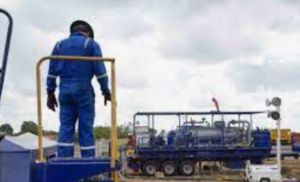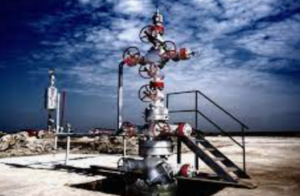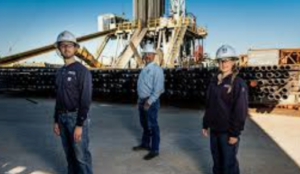Chevron has been making waves in the U.S. Gulf of Mexico, a region that is fast becoming a cornerstone of the company’s production growth. With ambitious plans to increase production to 300,000 net barrels of oil equivalent (BOE) per day by 2026, Chevron is leveraging advanced technology and strategic project execution to unlock the region’s vast potential. Here’s a closer look at the projects driving Chevron’s Gulf of Mexico success story and how they align with the company’s broader goals for growth and sustainability.

Expanding Waterflood Operations at St. Malo and Tahiti
In September, Chevron achieved a significant milestone with the commencement of water injection at its St. Malo offshore field. This marks Chevron’s first-ever waterflood project in the deepwater Wilcox trend, a critical step to enhancing oil recovery from this challenging environment. The St. Malo waterflood project, which was completed under budget, is expected to recover approximately 175 million gross BOE—adding to the nearly 400 million BOE already produced by Chevron’s Jack and St. Malo fields.
Waterflooding, a secondary recovery technique that involves injecting water into the reservoir to maintain pressure and push hydrocarbons toward the production well, is a proven method to extend the life of mature fields. For Chevron, expanding these operations is about more than just boosting production—it’s about maximizing resource recovery while minimizing environmental impact.
Not far from St. Malo, Chevron’s Tahiti facility has also ramped up waterflood operations to increase production. Tahiti, which has produced more than 500 million gross BOE since it started operations in 2009, continues to be a key asset in Chevron’s Gulf of Mexico portfolio.
A New Frontier: The Anchor Field
Chevron’s newest Gulf of Mexico project, the high-pressure Anchor Field, came online in August 2024. This project is yet another testament to Chevron’s ability to push the boundaries of deepwater exploration and production. Anchor is a next-generation facility, designed to operate in extreme conditions, and it represents a major technological achievement in deepwater oil and gas development.
According to Bruce Niemeyer, President of Chevron Americas Exploration & Production, the startup of Anchor, along with the advancements at St. Malo and Tahiti, underscores Chevron’s leadership in both technological innovation and project execution. The combination of these projects positions Chevron to meet its production target of 300,000 BOE per day by 2026—representing a 50% increase over its 2020 levels.
Sustainability at the Forefront
While production growth is a clear priority, Chevron is equally focused on sustainability. The company’s operations in the Gulf of Mexico are among the lowest carbon intensity barrels in the world. Chevron’s commitment to reducing the carbon footprint of its oil and gas production is evident in its approach to projects like Jack/St. Malo and Tahiti, where advanced technologies are used to optimize efficiency and reduce environmental impact.
As part of its broader sustainability strategy, Chevron aims to lower the carbon intensity of its operations while expanding its portfolio of lower-carbon businesses, including renewable fuels, carbon capture, hydrogen, and other emerging technologies. The Gulf of Mexico plays a key role in this strategy, not only as a source of high-value oil and gas but also as a proving ground for Chevron’s commitment to delivering energy in an ever-cleaner way.
Looking Ahead
Chevron’s deepwater expansion in the U.S. Gulf of Mexico is a testament to the company’s strategic focus on growth, technological leadership, and sustainability. With key projects like St. Malo, Tahiti, and Anchor driving production increases, Chevron is well on its way to achieving its ambitious target of 300,000 BOE per day by 2026.
As Chevron continues to push the boundaries of what’s possible in deepwater exploration and production, it also sets the stage for a future where energy is not only abundant but increasingly cleaner. By investing in both production growth and environmental stewardship, Chevron is positioning itself as a leader in the energy transition, delivering the energy the world needs while minimizing its impact on the planet.
Stay tuned as Chevron continues to chart a course toward its production goals in the Gulf of Mexico, a region that is fast becoming one of the most important hubs for the company’s global operations.







